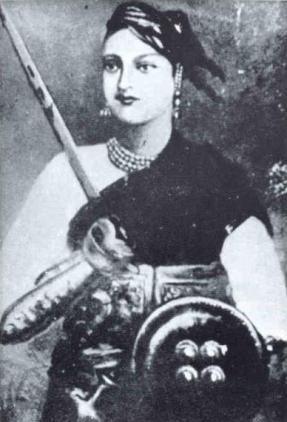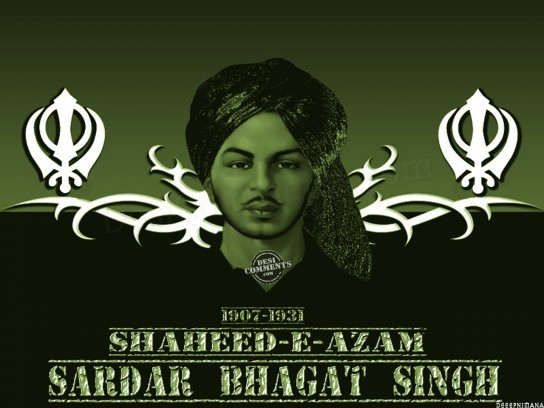LAKSHMI BAI
NAME : Lakshmi Bai (originally MANIKARNIKA)
DOB : 19 November 1835
DEATH : 17 June 1858
Qriginally named Manikarnika at birth nicknamed Manu , she was born on 19
November 1835 at Kashi Varanasi to a Maharashtrian Karhade Brahmin family from
Dwadashi, District Satara. She lost her mother at the age of four. She was
educated at home. Her father Moropant Tambey worked at the court of Peshwa Baji
Rao II at Bithur and then travelled to the court of Raja Gangadhar Rao
Newalkar, the Maharaja of Jhansi, when Manu was thirteen years old. She was
married to Gangadhar Rao, the Raja of Jhansi, at the age of 14.
During that period, Lord Dalhousie was the Governor General of British India.
The adopted child was named Damodar Rao. As per the Hindu tradition, he was
their legal heir. However, the British rulers refused to accept him as the
legal heir. As per the Doctrine of Lapse, Lord Dalhousie decided to seize the
state of Jhansi. Rani Lakshmibai went to a British lawyer and consulted him.
Thereafter, she filed an appeal for the hearing of her case in London. But, her
plea was rejected. The British authorities confiscated the state jewels. Also,
an order was passed asking the Rani to leave Jhansi fort and move to the Rani
Mahal in Jhansi. Laxmibai was firm about protecting the state of Jhansi
After her marriage, she was given the name Lakshmi Bai. Because of her father's
influence at court, Rani Lakshmi Bai had more independence than most women, who
were normally restricted to the zenana: she studied self defense, horsemanship,
archery, and even formed her own army out of her female friends at court.
Rani Lakshmi Bai gave birth to a son in 1851, however this child died when he
was about four months old. After the death of their son, the Raja and Rani of
Jhansi adopted Damodar Rao. However, it is said that her husband the Raja never
recovered from his son's death, and he died on 21 November 1853 of a broken
heart.
Because Damodar Rao was adopted and not biologically related to the Raja, the
East India Company, under Governor-General Lord Dalhousie, was able to install
the Doctrine of Lapse, rejecting Rao's rightful claim to the throne. Dalhousie
then annexed Jhansi, saying that the throne had become "lapsed" and
thus put Jhansi under his "protection". In March 1854, the Rani was
given a pension of 60,000 rupees and ordered to leave the palace at the Jhansi fort.
Rani Jhansi was determined not to give up Jhansi. She strengthened its defences
and assembled a volunteer army. Women were also given military training. Rani's
forces were joined by warriors including Gulam Gaus Khan, Dost Khan, Khuda
Baksh, Lala Bhau Bakshi, Moti Bai, Sunder-Mundar, Kashi Bai, Deewan Raghunath
Singh and Deewan Jawahar Singh.
While this was happening in Jhansi, on May 10, 1857 the Sepoy (soldier) Mutiny
of India started in Meerut. This would become the starting point for the
rebellion against the British. It began after rumours were put about that the
new bullet casings for their Enfield rifles were coated with pork/beef fat, pigs
being taboo to Muslims and cows sacred to Hindus and thus forbidden to eat.
British commanders insisted on their use and started to discipline anyone who
disobeyed. During this rebellion many British civilians, including women, and
children were killed by the sepoys. The British wanted to end the rebellion
quickly.
Meanwhile, unrest began to spread throughout India and in May of 1857, the
First War of Indian Independence erupted in numerous pockets across the
northern subcontinent. During this chaotic time, the British were forced to
focus their attentions elsewhere, and Lakshmi Bai was essentially left to rule
Jhansi alone. During this time, her qualities were repeatedly demonstrated as
she was able swiftly and efficiently to lead her troops against skirmishes
breaking out in Jhansi. Through this leadership Lakshmi Bai was able to keep
Jhansi relatively calm and peaceful in the midst of the Empire’s unrest.
Up to this point, she had been hesitant to rebel against the British, and there
is still some controversy over her role in the massacre of the British HEIC
officials and their wives and children on the 8th June 1857 at Jokhan Bagh. Her
hesitation finally ended when British troops arrived under Sir Hugh Rose and
laid siege to Jhansi on 23rd March 1858. Rani Jhansi with her faithful warriors
decided not to surrender. The fighting continued for about two weeks. Shelling
on Jhansi was very fierce. In the Jhansi army women were also carrying
ammunition and were supplying food to the soldiers. Rani Lakshmi Bai was very
active. She herself was inspecting the defense of the city. She rallied her
troops around her and fought fiercely against the British. An army of 20,000,
headed by the rebel leader Tatya Tope, was sent to relieve Jhansi and to take
Lakshmi Bai to freedom. However, the British, though numbering only 1,540 in
the field so as not to break the siege, were better trained and disciplined
than the “raw recruits,” and these inexperienced soldiers turned and fled
shortly after the British began to attack on the 31st March. Lakshmi Bai’s
forces could not hold out and three days later the British were able to breach
the city walls and capture the city. Yet Lakshmi Bai escaped over the wall at
night and fled from her city, surrounded by her guards, many of whom were from
her women’s military.
Along with the young Damodar Rao, the Rani decamped to Kalpi along with her
forces where she joined other rebel forces, including those of Tatya Tope. The
Rani and Tatya Tope moved on to Gwalior, where the combined rebel forces
defeated the army of the Maharaja of Gwalior after his armies deserted to the
rebel forces. They then occupied the strategic fort at Gwalior. However on the
second day of fighting, on 18 June 1858, the Rani died.
She died on 18 June, 1858 during the battle for Gwalior with 8th Hussars
that took place in Kotah-Ki-Serai near Phool Bagh area of Gwalior. She donned
warrior's clothes and rode into battle to save Gwalior Fort, about 120 miles
west of Lucknow in what is now the state of Uttar Pradesh. The British captured
Gwalior three days later. In the report of the battle for Gwalior, General Sir
Hugh Rose commented that the rani "remarkable for her beauty, cleverness
and perseverance" had been "the most dangerous of all the rebel
leaders".









